Photos: In northern Maine, collaboration brings better health
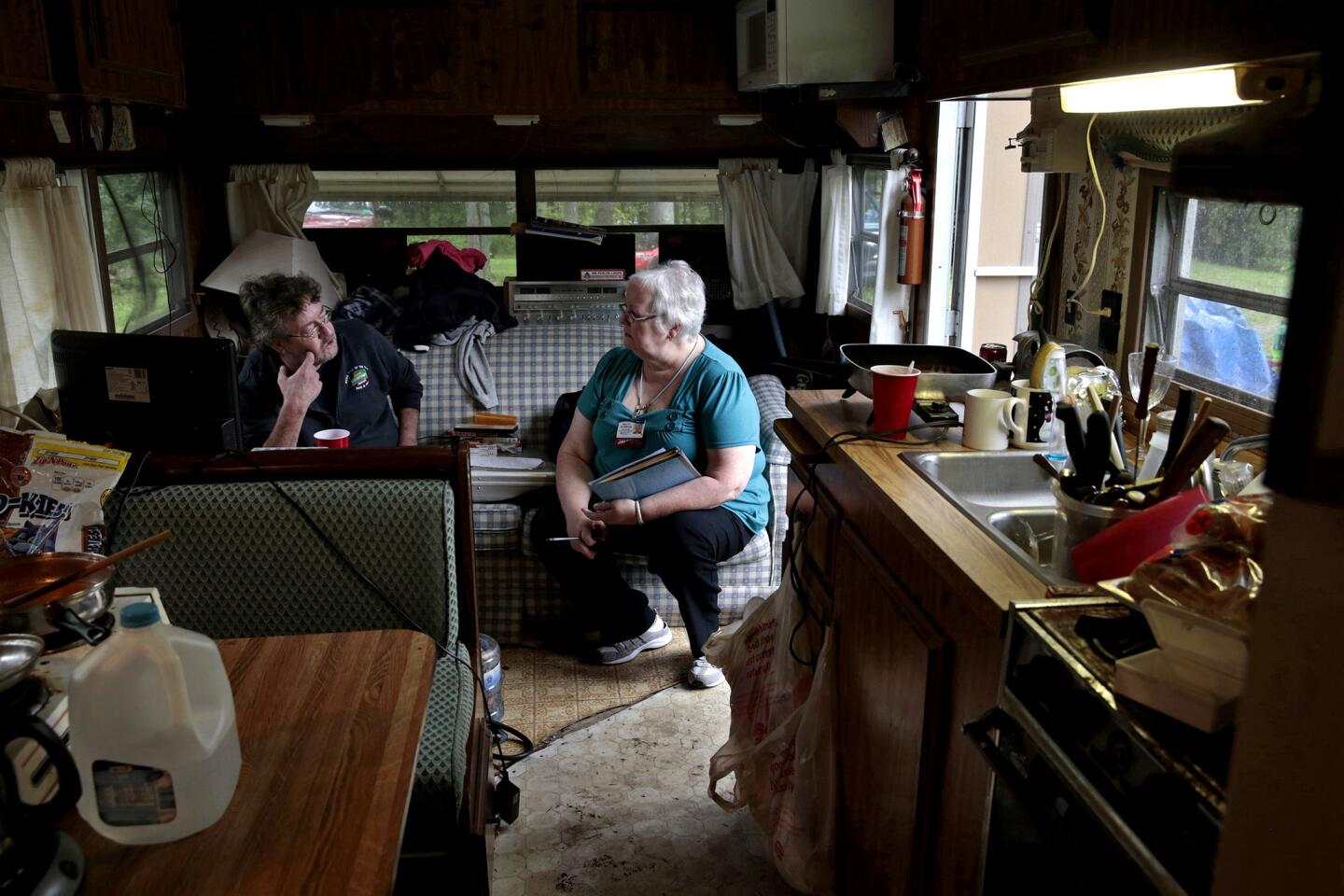
Nurse Sally Patterson goes over medical information at the trailer home of David Smith of Carmel, Maine. Patterson makes such visits across a wide swath of the northern section of the state, part of a collaborative effort among businesses and health workers to help patients live healthier lives and stay out of the hospital. (Carolyn Cole / Los Angeles Times)
Many of the nation’s healthiest communities are wealthy and have large numbers of college-educated residents. Northern Maine is among a handful of exceptions, making it an important guidepost as the country searches for ways to improve health.
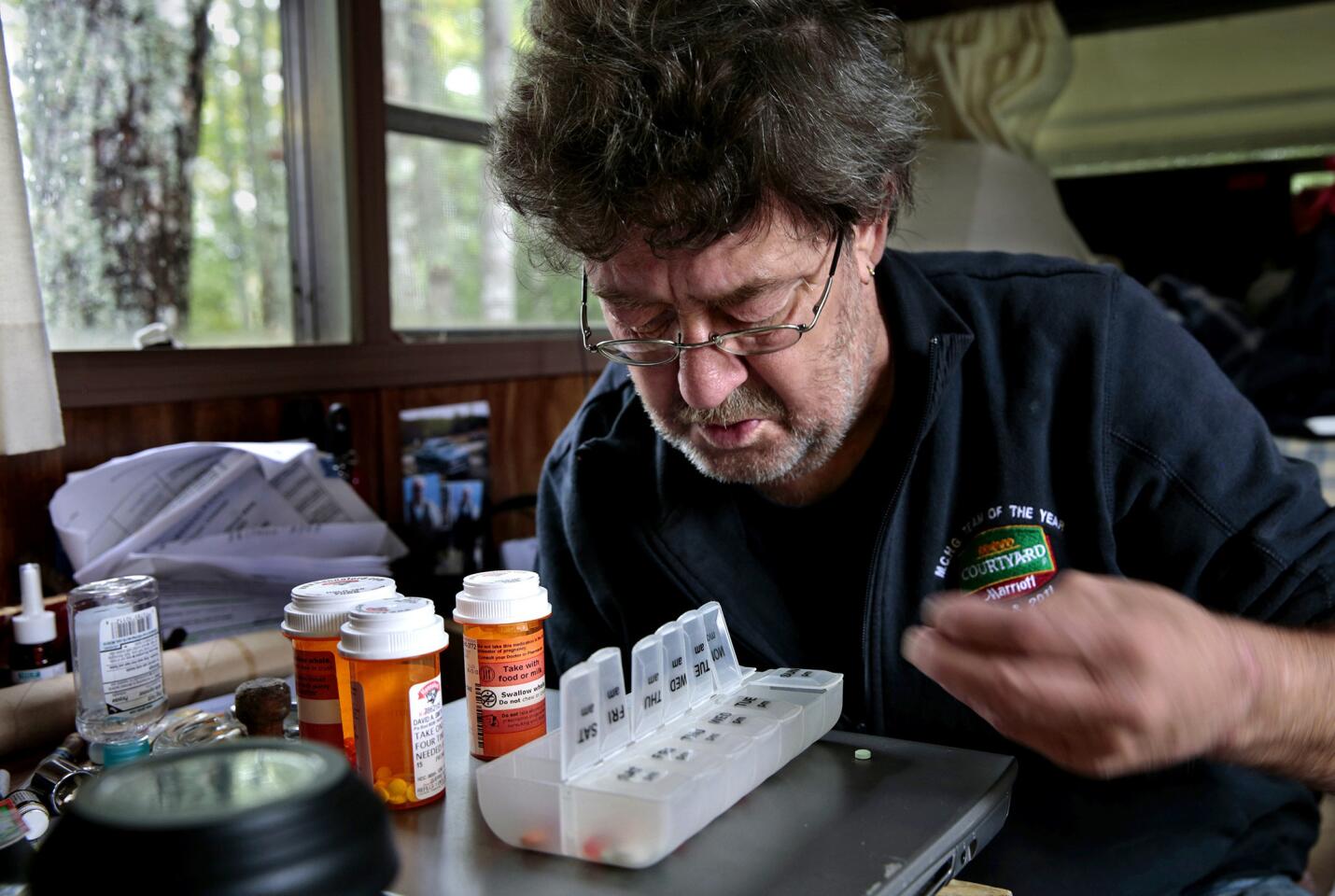
David Smith looks over his daily medications. He gets help with organizing his medicines when nurse Sally Patterson visits. (Carolyn Cole / Los Angeles Times)

Medication instructions help a patient keep track of things. (Carolyn Cole / Los Angeles Times)
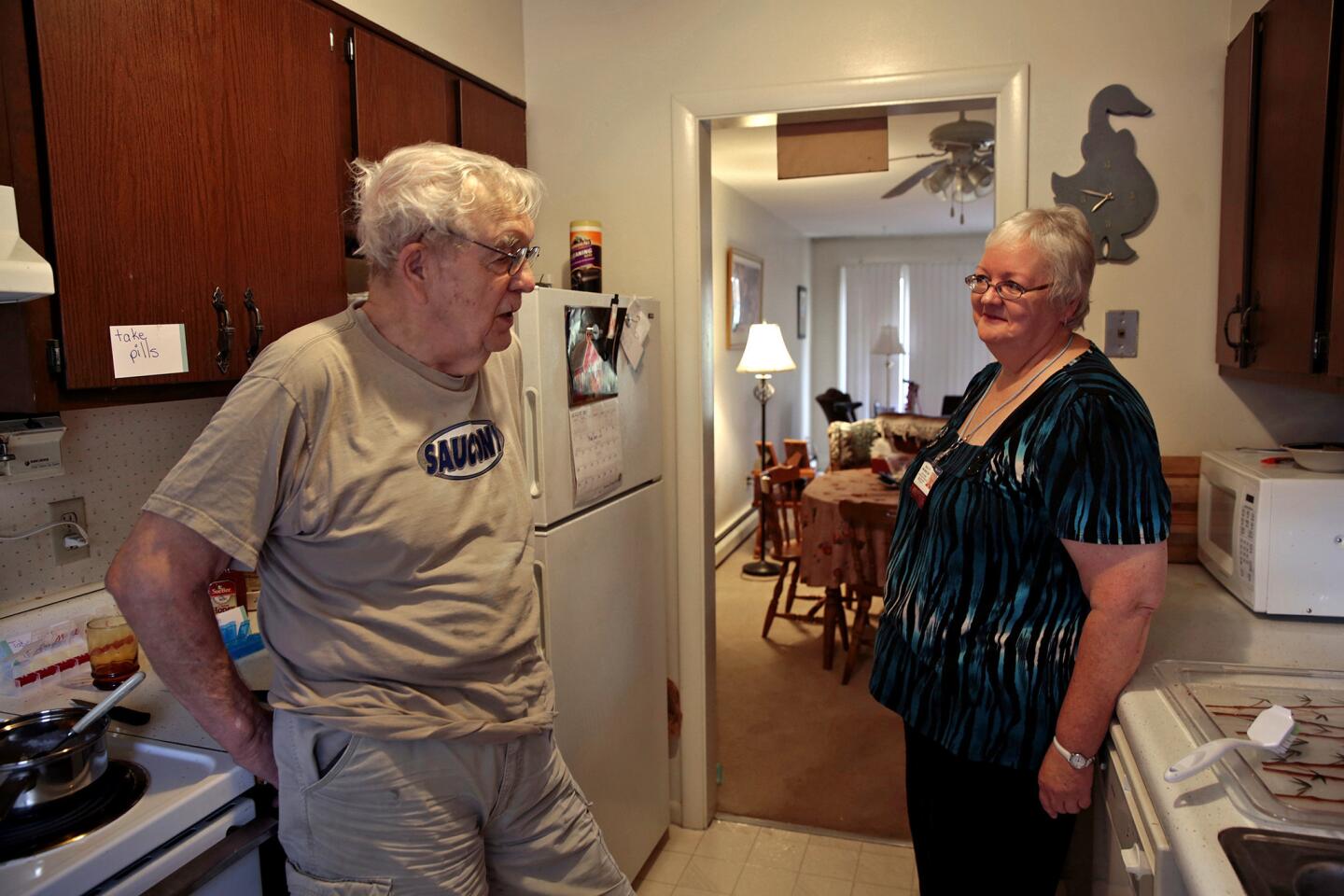
Nurse Sally Patterson pays another visit to a patient. (Carolyn Cole / Los Angeles Times)
Advertisement

“I feel so lucky to live here,” says Gertrud Champe, a retired college professor in Surrey, Maine. Champe, who suffers from chronic obstructive pulmonary disease, has been getting intensive community-based care for years. (Carolyn Cole / Los Angeles Times)
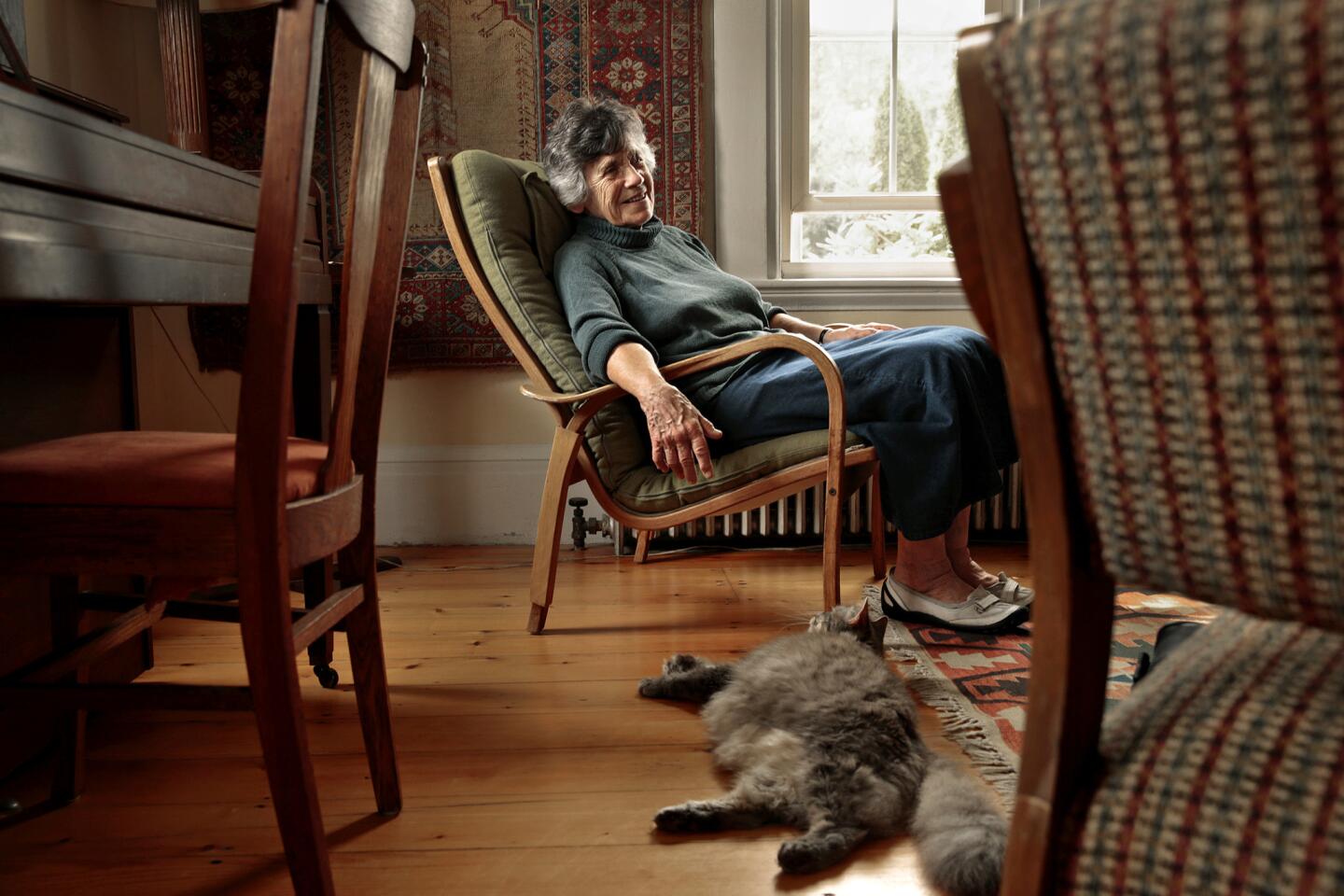
Gertrud Champe says she’s still able to travel and garden thanks to the community-based healthcare she receives. (Carolyn Cole / Los Angeles Times)
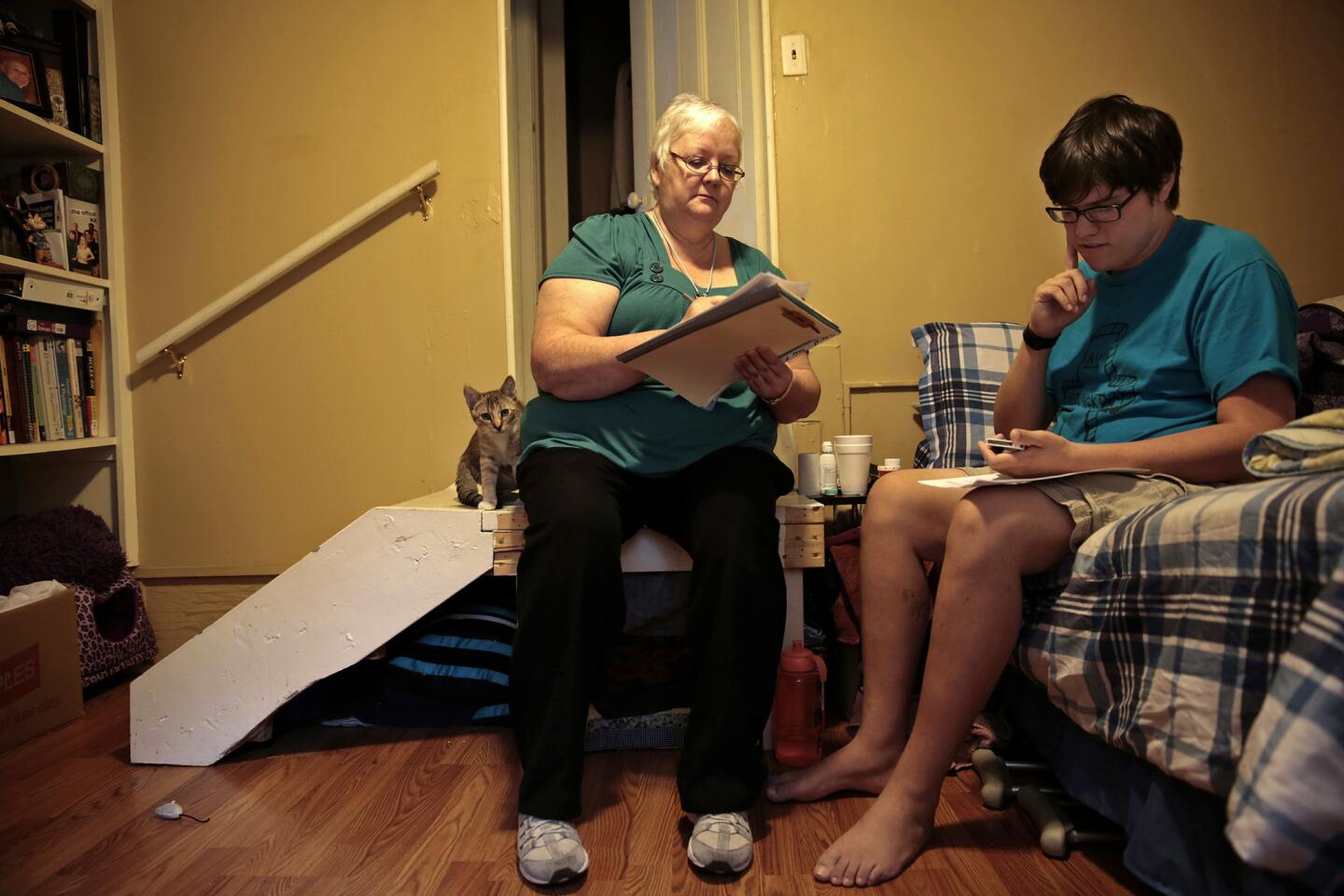
Nurse Sally Patterson visits with a patient. (Carolyn Cole / Los Angeles Times)
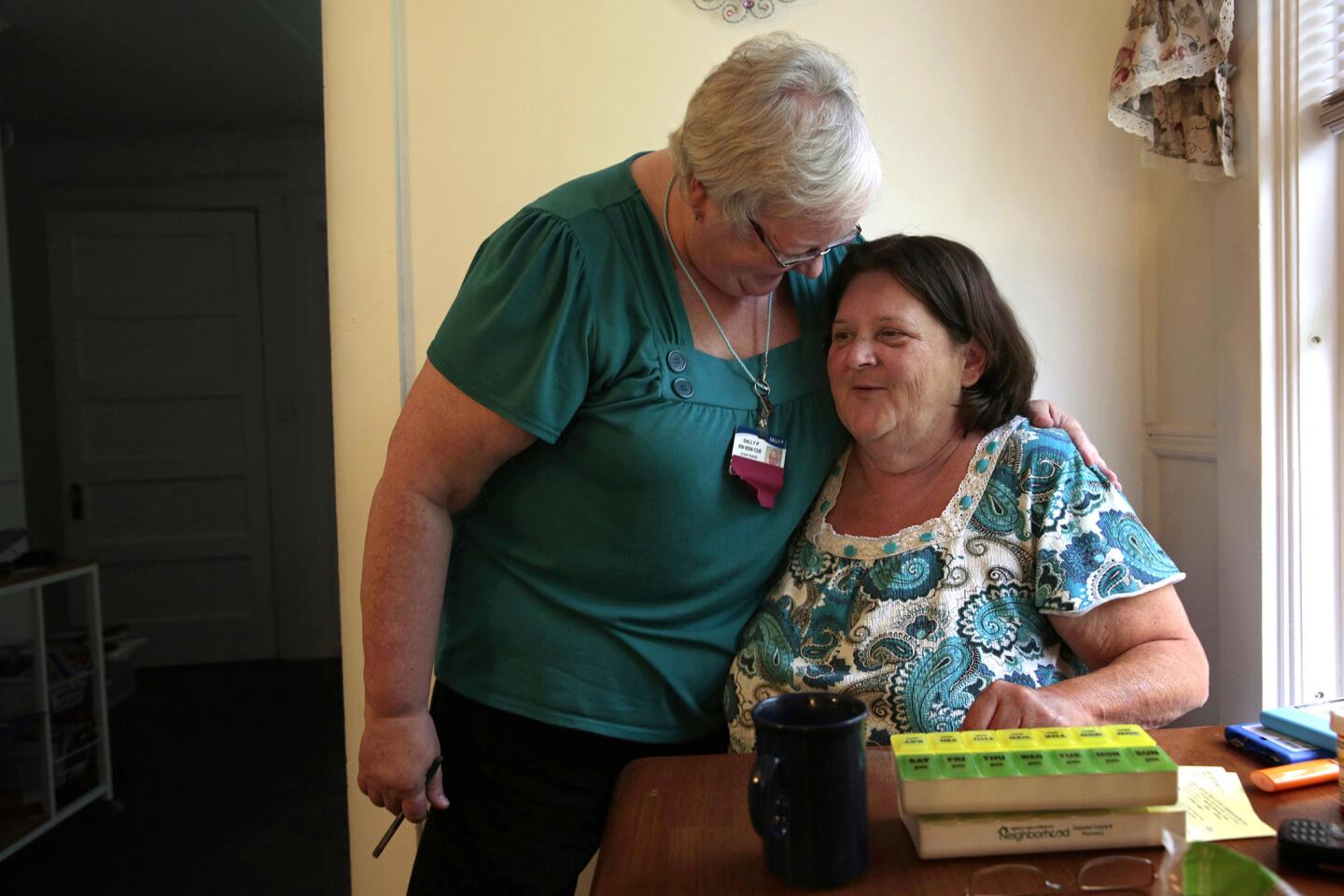
Christine McDonald, right, of Carmel, Maine, was initially skeptical of receiving help from nurse Sally Patterson, but after their visits began she was able to bring her blood sugar under control. (Carolyn Cole / Los Angeles Times)
Advertisement
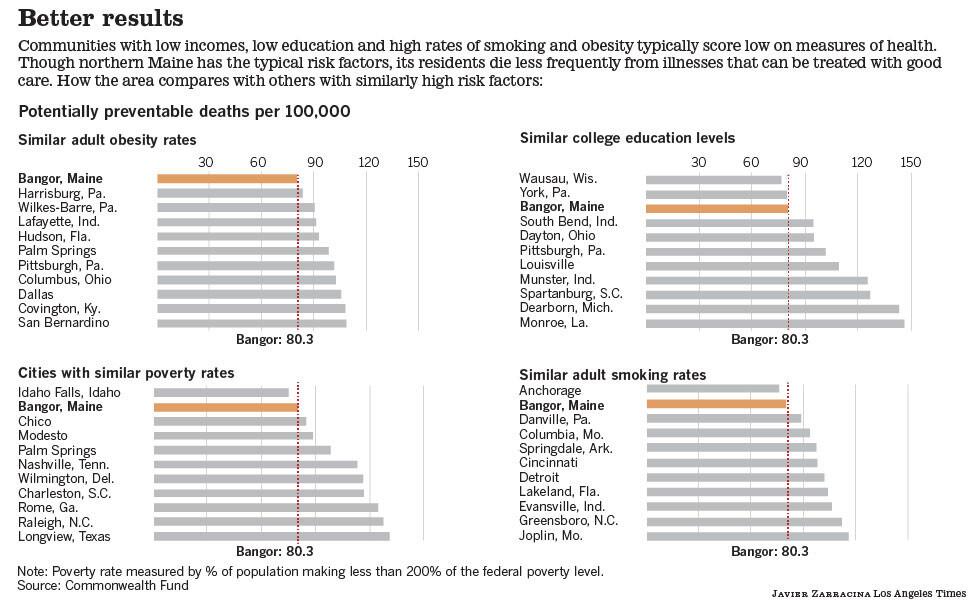
Communities with low incomes, low education and high rates of smoking and obesity typically score low on measures of health. Though northern Maine has the typical risk factors, its residents die less frequently from illnesses that can be treated with good care. This graphic shows how the area compares with others with similarly high risk factors. (Javier Zarracina / Los Angeles Times)







